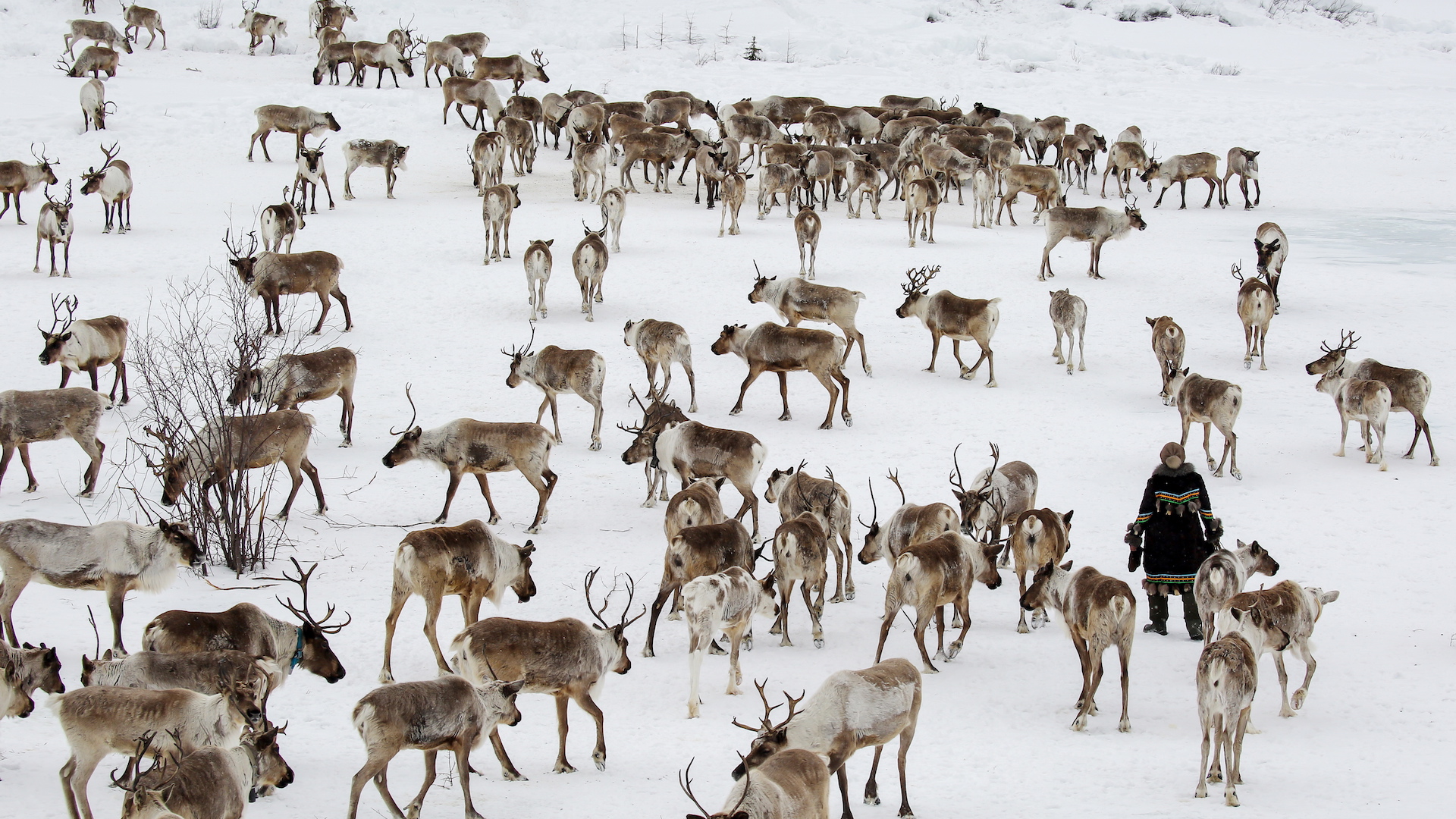

Unmanned aerial vehicles have significantly impacted how scientists in the modern era are tracking and studying animals. Not only are drones responsible for discovering unknown populations of various species, but camera-drones are also actively revealing behaviors and motivations for certain species to scientists. In 2015, two ecologists used drones and machine vision software to record and analyze the behaviors of a Canadian caribou herd of Dolphin and Union caribou. What they discovered were the migration patterns, individual behaviors, and motivations for these caribou and their movements.
According to National Geographic, Santa Fe Institute fellow Andrew Berdahl and Colin Torney of the University of Glasgow took a team of colleagues to Western Canada and captured nearly 13 hours of aerial footage. What they were looking for was accurate context regarding how caribou operate in a herd, both individually and as a group. This footage was then deconstructed with machine vision software that not only identified each individual caribou across all frames, but thereby then analyze their individual trajectories across the entire 13 hours of footage.
This provides “essentially traffic rules for Caribou,” said Berdahl. “We also need to know the social context driving movement decisions. And for that we need to see the behavior of (more) of the herd at the same time.” The decision to use drones makes total sense, since traditional GPS-only tracking and monitoring is far less revealing, and camera-drones are pretty affordable and sophisticated these days, especially when combined with modern software that can give scientists pretty significant benefits when analyzing footage and data.
According to National Geographic, what the study actually revealed was a vast array of individual behaviors and patterns for certain sub-groups of the herd. A bull male, for example, was the least likely to behave a certain way based on other caribou, while the young ones were far more impressionable and prone to copying others. While some caribou stick close, others pay less attention to the behaviors of others. The factors which designated a certain caribou to behave as it did were variations of the following factors: social status, sex, reproductive status, and age. This is reportedly something scientists haven’t been able to study with conventional data-collecting tech like GPS.
In addition to realizing how strong the social factors were when it came to determining a caribou’s movements, scientists found that the animal was more influenced by a herd member at the front, than one beside or behind it. While the Inuit have reportedly been aware of this for quite some time now, it was drone technology that allowed for a more scientific, recorded method to confirm this. Berdahl reportedly said that the more experienced individual caribou stay at the front to teach the less experienced, younger caribou accurate migration routes.
“These are very difficult data to get,” said Iain Couzin of the Max Planck Institute for Ornithology in Germany. “Drones are opening up a new opportunity for us biologists, giving us access to systems that are incredibly hard to study.” In other words, the practicality of this new aerial hardware and the sophistication of its modern software is giving scientists tools they’ve never had before, to research and understand the wildlife on our planet more clearly and accurately. “It’s very exciting to be able to use new technology to obtain quantitative information about large animals (on the move),” said Couzin.
Berdahl is not only extremely keen on learning more, but also convinced that broadening the scope of research methodologies to include UAVs, machine vision, and other technologies will irrevocably change the industry. Drones can collect high-resolution imagery, map areas accurately, record 3-D data, and thermal information. In Berdahl’s mind, tech like this, taken to it’s fullest extent, could reveal more about our planet than we may think. “This is a developing methodology that could be applied to many animal systems,” said Berdahl. “I’d be tempted to say it will revolutionize studies of this kind.”